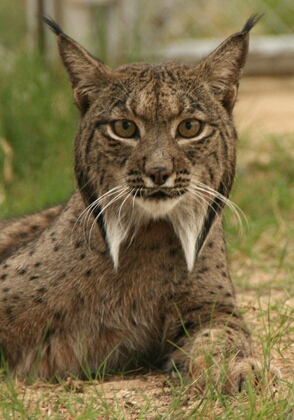The first article is about this either really cute or really ugly lemur (I honestly can't decide) called the Aye-aye.
Aww, look at it's big cute eyes! If only it didn't have
bat ears and always look slightly deranged...
The Aye-aye is only found on the island of Madagascar, and lives in really spread out populations, so people can't really get a lot of information about it. What we do know is that it has constantly growing incisors that it uses to gnaw the bark off dead trees. Then, it uses its freakishly long and flexible middle finger to reach in and pull out and eat insect larvae, basically making it a pseudo-woodpecker-lemur.
Omnomnom!
Sadly though, the Aye-aye has recently been reclassified as endangered.
Baby Aye-aye says "Oh no! We're all gonna go extinct?!"
Gratefully, a team of scientists lead by George H. Perry, assistant professor of Anthropology and Biology at Penn State University, have become interested in saving the Aye-aye.

Baby Aye-aye now says "Yay!"
Perry says "Aye-aye population densities are very low, and individual aye-ayes have huge home-range requirements. As forest patches become smaller, there is a particular risk that there won't be sufficient numbers of individual aye-ayes in a given area to maintain a population over multiple generations. We were looking to make use of new genomic-sequencing technologies to characterize patterns of genetic diversity among some of the surviving aye-aye populations, with an eye towards the prioritization of conservation efforts."
So, Perry's goal was to collect DNA samples from Aye-ayes across the island, particularly the northern, eastern, and western sectors, and get complete genomes to show how much genetic diversity there is among the Aye-aye population. While the eastern and western populations were somewhat different, there was a large difference between the northern and eastern populations, suggesting that inbreeding has not happened between Aye-ayes of those two areas for an extended period of time.
Their next step was to compare the twelve complete Aye-aye genomes to twelve complete human genomes to see how much inbreeding has happened in the Aye-aye population. Why compare it to humans? Well, it's because humans don't inbreed, meaning that our DNA is much more varied. The closer the variation in the Aye-aye genomes are to the human variation, the better.
To see the full results from the tests, read the full article here: http://news.psu.edu/story/270152/2013/03/25/research/endangered-lemurs-complete-genomes-are-sequenced-and-analyzed
Remember last month when I talked about the first puppy born from a frozen and transferred embryo, Klondike? Well, the methods used for his birth are being put to use in critically endangered species.
Enter the Iberian Lynx.

"Oh, don't worry, I always look this majestic."
The Iberian Lynx lives in two population centers: one on the coast of Spain, the other in the mainland.

The Iberian lynx used to live throughout the Iberian peninsula (Spain and Portugal), but within the past 150 years, the species has become critically endangered.

"What? Endangered?!"
Scientists at the Leibniz Institute for Zoo and Wildlife Research recently obtained Iberian Lynx embryos and froze them. The frozen embryos can be transplanted into European Lynxes, a species with much less at risk.
And then they give birth to these!
To see full coverage of the topic, read the full article here: http://www.fv-berlin.de/news/embryonen-des-pardelluchses-im-tiefkuehler?set_language=de
So, thanks again for reading! I hope you share this kind of stuff with your friends, or maybe even donate to a couple of causes. See you in two weeks!
Another great post, Matt!
ReplyDelete